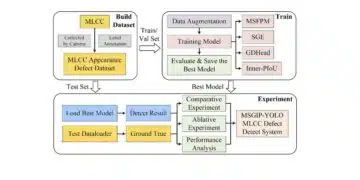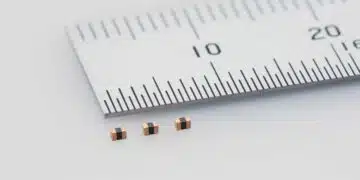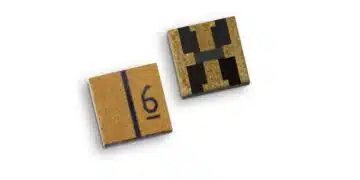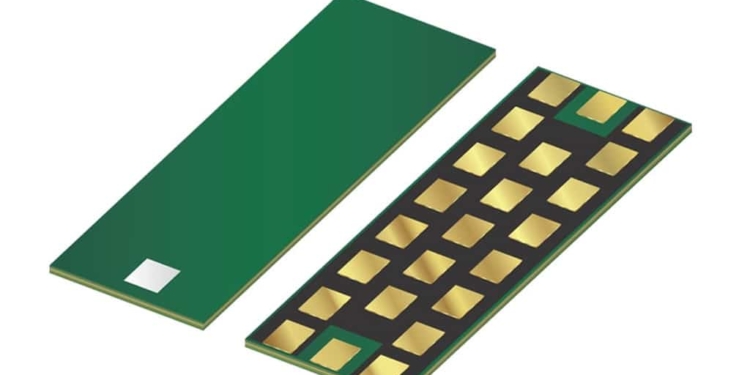Source: AVX news
The new BP Series MLO® band-pass filters feature an ultralow profile of less than 0.556mm, support 18 pass bands spanning 620–5,930MHz, & exhibit excellent frequency response with low insertion loss, high out-of-band rejection, & steep roll-offs.
FOUNTAIN INN, S.C. (May 3, 2018) – AVX Corporation, a leading manufacturer and supplier of advanced electronic components and interconnect, sensor, control, and antenna solutions, has released a new series of low-profile, high-performance band-pass filters based on AVX’s patented and proven multilayer organic (MLO®) high-density interconnect technology.
The new BP Series MLO band-pass filters incorporate high-dielectric-constant and low-loss materials that are expansion matched to most organic PCB materials, providing improved reliability over standard silicon and ceramic devices, feature an ultralow profile of less than 0.556mm, and support 18 pass bands spanning 620–5,930MHz. The series also exhibits low insertion loss (1.57–2.41dB typical), low parasitics, 50Ω impedance, excellent rejection of out-of-band frequencies, and favorable heat dissipation characteristics, and is rated for 1W continuous RF power, making it ideal for use in a wide range of wireless applications, including: wireless communications systems, military and emergency first responder radios, UAVs, base stations, femtocells, microcells, wireless access points and terminals, and instrumentation equipment.
The new BP Series MLO band-pass filters allow RF design engineers to achieve lower in-band insertion loss, better out-of-band attenuation with steeper roll-offs, and better heat dissipation than designs that utilize LTCC products. MLO filters integrate inductors and capacitors into a small, low profile package, eliminating the need to construct filters using discrete capacitors and inductors. This improves performance and reliability, reduces the required board placement space, and removes the need for tuning using individual capacitors and inductors. BP Series filters also benefit from MLO technology’s high part-to-part and lot-to-lot repeatability and materials that are impervious to performance variation with temperature changes, which allow them to deliver the consistently predictable performance required to achieve smaller, more capable wireless electronics, simplify RF designs, and reduce design cycle times.
The new BP Series MLO band-pass filters are currently available in three case sizes: 3416, 4617, and 5021, and are supplied with gold terminations that are compatible with automatic soldering technologies including: reflow, wave soldering, vapor phase, and manual. The series is rated for operating temperatures spanning -55°C to +85°C, is 100% tested for electrical parameters, is both RoHS compliant and lead-free compatible, and can be shipped on tape and reel or in waffle packing. Lead-time for the series is currently stock to 16 weeks.
































